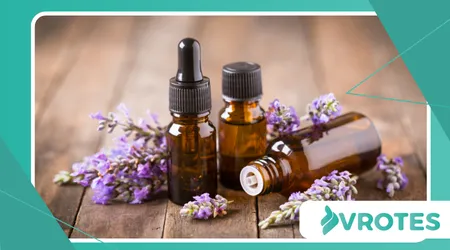Integrating Aromatherapy with Cognitive Behavioral Therapy

Integrating Aromatherapy with Cognitive Behavioral Therapy. The conversation around mental health is evolving, shifting toward holistic and integrated solutions that address both mind and body.
Anúncios
In this new landscape, the synergy between ancient practices and modern science offers a promising path forward.
One such powerful combination is Integrating Aromatherapy with Cognitive Behavioral Therapy, a novel approach that enhances traditional therapeutic outcomes.
This union marries the psychological restructuring of CBT with the physiological and emotional support provided by aromatherapy.
The Foundational Principles of CBT and Aromatherapy
Cognitive Behavioral Therapy (CBT) is a structured, evidence-based therapy. It focuses on identifying and challenging distorted thought patterns and behaviors.
Anúncios
The core premise is that our thoughts, feelings, and actions are interconnected. By changing one, you can influence the others.
This process is often a deep, introspective journey that requires significant mental effort and emotional resilience.
Aromatherapy, by contrast, is a complementary health practice. It uses aromatic plant extracts and essential oils to promote health and well-being.
These oils, when inhaled, interact with the olfactory system. This system is directly linked to the brain’s limbic system, which controls emotions and memory.
Inhaling certain scents can trigger immediate physiological and psychological responses. For instance, lavender is well-known for its calming properties.
The Symbiotic Relationship: When Two Become One
So, how do these two disciplines work together? Think of a skilled orchestra conductor and a first-chair violinist.
The conductor (CBT) provides the structure, the score, and the direction for the entire performance.
They guide the musician on where to place their notes and how to build a crescendo.
Read more: How Ayurvedic Doshas Influence Modern Stress Responses
The violinist (aromatherapy) adds the rich, emotional texture and immediate resonance that captivates the audience.
Without the violinist, the performance is incomplete and lacks a certain emotional depth. Without the conductor, the violinist’s talent is unguided and lacks purpose.
Integrating Aromatherapy with Cognitive Behavioral Therapy means using the calming, mood-enhancing effects of essential oils as a tool within the therapeutic framework of CBT.
For example, a person struggling with social anxiety might use peppermint oil before a difficult social engagement.
The oil can act as a grounding mechanism, a tangible anchor in the moment.
It provides an immediate sense of clarity and focus, allowing the individual to apply their CBT-learned techniques, such as reframing anxious thoughts, more effectively.

Practical Applications and Real-World Examples
A CBT session might involve a therapist helping a client identify and challenge a negative thought.
For someone with a panic disorder, this could be the thought “I’m going to have a panic attack and something terrible will happen.”
The therapist guides them through an exercise to deconstruct this thought.
Read here: DIY Herbal Teas for Night Sweats and Sleep Support
By having the client diffuse a soothing oil like chamomile during this process, the therapeutic environment becomes more conducive to emotional regulation.
The aroma helps to lower heart rate and calm the nervous system.
This creates a state of mind where the client is more receptive to new cognitive frameworks. It’s a bio-hack for a behavioral process.
Another powerful example is using aromatherapy for exposure therapy. A person with a phobia of flying might be guided through an imaginary flight.
The therapist can use a citrus scent, like bergamot, which is known for its uplifting properties, to create a positive association with the imagined scenario.
This conditioning can help alleviate the anticipatory anxiety. The scent becomes a cue for a calmer state, which the individual can carry with them when they encounter a real-life trigger.
Integrating Aromatherapy with Cognitive Behavioral Therapy is not just about relaxation; it is about creating actionable, sensory cues that reinforce positive behaviors and thoughts.
Scientific Grounding and Evidence-Based Synergy
While much of the scientific research on aromatherapy is still emerging, there is a growing body of evidence supporting its efficacy in managing stress and anxiety.
For instance, a 2013 study published in the journal Evidence-Based Complementary and Alternative Medicine found that inhaling lavender oil had a calming effect on the central nervous system, reducing anxiety and improving mood.
Others are also reading: The Power of Dating Apps
This provides a scientific basis for its use in conjunction with therapeutic practices. The effect is not magical; it’s a physiological response that can be measured.
Furthermore, statistics show that the use of complementary and alternative medicine (CAM) is on the rise.
According to the National Center for Complementary and Integrative Health (NCCIH), approximately 30% of U.S. adults use some form of CAM.
This trend indicates a public interest and a readiness to explore holistic solutions, making the integration of aromatherapy into traditional therapies a timely and relevant topic.
Creating a Personalized Holistic Plan
A major benefit of Integrating Aromatherapy with Cognitive Behavioral Therapy is the ability to create highly personalized treatment plans.
Just as a therapist tailors their CBT techniques to an individual’s specific needs, a practitioner can select essential oils based on the client’s preferences and physiological responses.

The following table provides a guide for this synergy.
| Aromatic Oil | Primary Psychological Benefit | Potential CBT Application |
| Lavender | Calming, Anxiety Reduction | Used during relaxation and mindfulness exercises. |
| Peppermint | Mental clarity, Focus | A grounding tool for individuals with ADHD or during thought deconstruction. |
| Lemon | Mood elevation, Energizing | Combating depressive thoughts and boosting motivation. |
| Chamomile | Stress relief, Emotional regulation | For de-escalation of anger and frustration in difficult moments. |
This personalized approach empowers the client. They are not passive recipients of therapy. Instead, they are active participants, using a tangible tool to help navigate their emotions.
The Future is Integrated and Human-Centered
Why would we limit ourselves to only one tool when we have an entire toolbox at our disposal? The future of mental healthcare lies in these integrated approaches.
By recognizing the powerful connection between our sense of smell and our emotional state, we can unlock new pathways to healing.
Integrating Aromatherapy with Cognitive Behavioral Therapy is more than a trend; it’s a testament to the power of combining ancient wisdom with modern psychological science.
It is a compassionate and effective way to guide individuals toward a state of lasting well-being.
This is not about replacing therapy with a scent. It’s about enhancing the therapeutic journey, making it more accessible, and creating a richer, more powerful experience for the individual.
The combination is a holistic strategy for profound change.
Frequently Asked Questions
Can I replace my therapy sessions with aromatherapy?
No, aromatherapy is a complementary tool and not a substitute for professional therapy. It should be used to support and enhance the work you do with a qualified therapist.
Are all essential oils safe for use?
It is essential to use high-quality, pure essential oils from reputable sources.
Always consult with a healthcare professional or certified aromatherapist, especially if you have pre-existing health conditions or are pregnant.
How do I know which essential oil is right for me?
The choice of essential oil can be very personal. Start with a scent you find pleasant and then explore its reported benefits.
You may also consult with a certified aromatherapist for a personalized recommendation.
++ The Role of Aromatherapy in Easing Anxiety and Depression.
++ The efficacy of integrated cognitive behavioral therapy (CBT) and acupressure versus CBT for insomnia: a three-arm pilot randomized controlled trial
